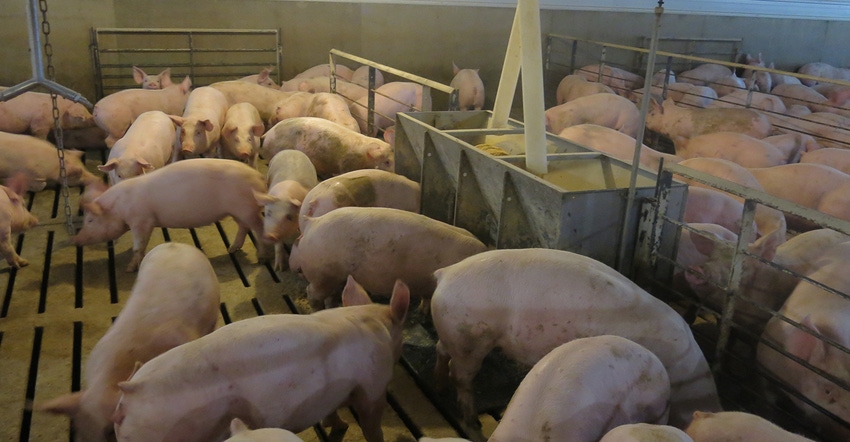Seasonal trends are in pork producers’ favor
Further improvement in hog profits will be coming mostly from higher hog prices.

It comes as no surprise that the futures market is predicting the usual seasonal pattern for hog prices over the coming year. The futures market indicates hog prices will trend higher until July then decline until the end of the year. The futures market is predicting higher hog prices in 2024 than in 2023; but futures are indicating hog prices will be lower in the first half of 2025 than in the first half of this year.
USDA is slightly less optimistic about 2024 prices. USDA’s February World Agricultural Supply and Demand Estimates said prices for 51-52% lean live hogs averaged $58.59/cwt last year and are forecasting an average of $60/cwt this year. That is higher, but not by much.
Plain
Hog prices usually move higher during the first quarter of the year. For seven of the las 10 years February hog prices have averaged above January’s and March prices were higher than in February. Live hog prices averaged under $50/cwt during both December and January. These months had the lowest hog prices since January 2021.
Higher hog prices are sorely needed. Calculations by the Economics Department at Iowa State University estimate the typical Iowa farrow-to-finish operation lost $34.86 for each hog sold during January 2024. That was the 13th month with red ink in the last 15 months. In the last decade hogs sold during November, December or January have had losses on average and the remaining nine months have been profitable on average.
Plain
Iowa State University estimated the average production cost for January 2024 marketings was $89.22/cwt of carcass weight. That is lower for the ninth consecutive month and the lowest cost since February of 2022. The decline in production cost has been driven by lower feed prices. Corn prices have been declining sharply over the past 12 months. The average farm price of corn in January was $2.50/bu lower than a year ago. Lower feed costs are likely to result in heavier slaughter weights.
Plain
It appears that any further improvement in hog profits will be coming mostly from higher hog prices.
As one might expect given our low hog and pork prices last year, international trade was positive for the U.S. pork industry in 2023. At 1.14 billion pounds, U.S. pork imports were down 15.0% compared to the year before. Pork imports were the lowest since 2020.
U.S. pork exports, at 6.82 billion pounds, were up 7.5% over the year before. Pork exports were the highest since 2021.
Plain
USDA is forecasting that 2024 U.S. pork exports will be up 3.8% year-over-year and pork imports will be up 4.4%. For the last three years Mexico has been the primary growth market for U.S. pork exports.
Hog imports during 2023 totaled 6,747,492 head, up 4.0% from the year earlier and the highest since 2008. Nearly three-quarters of hog imports are weaner/feeder pigs from Canada. Hog exports totaled 67,802 head last year, up 49.7% from 2022 and the highest since 2008.
Plain
Hog slaughter has been well above the level indicated by USDA’s estimate of the December market hog inventory. For the last 12 weeks hog slaughter has been 4.0% higher than a year ago. The December Hogs and Pigs report indicated slaughter would be up only 1.3%.
Looking ahead, the December market hog inventory implies that March-May hog slaughter would be down 0.5% year-over-year. I’m expecting slaughter to continue running higher than the Hogs and Pigs report indicated.
Plain
USDA is forecasting that 2024 pork production will be 2.12% above last year and 3.3% above 2022. That level of increase indicates that USDA expects both slaughter numbers and slaughter weights will be slightly higher than in 2023.
Per capita pork consumption is expected to total 50.7 pounds this year. That is 0.5 pounds more than last year but 0.4 pounds less than in 2022.
The average retail price for pork during January was $4.787 per pound. This was the lowest month since July. It was also the same price as January 2023. Hopefully, lower pork prices will cause an increase in pork sales.
Plain
Financial losses for hog producers were record high last year. This was despite the fact that hog slaughter was lower than in 2019, 2020 or 2021. Hog producers need relief. It doesn’t appear that will be coming from reduced pork production. The best hope is stronger consumer demand.
About the Author(s)
You May Also Like





